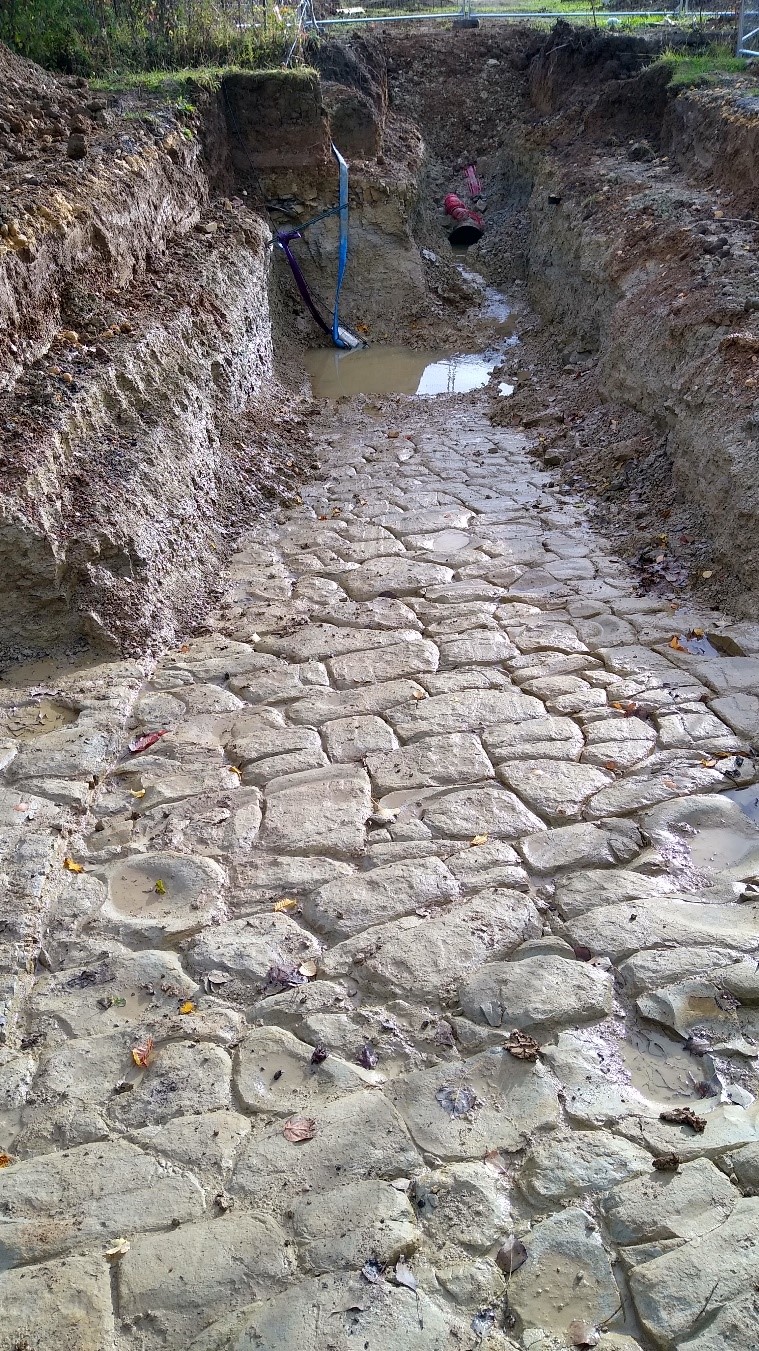
During October 2022 the discovery of what appeared to be a Roman Ford in a secret location near Evesham gained rapid attention from the local press, the BBC News website, and various Archaeology blogs.
The secret location – still not published until this article – was a field some 30 metres south of Badsey Brook and around two hundred metres east of the River Avon. It is in Aldington parish, but closer to the village of Offenham. In that area, Badsey Brook is named Broadway Brook on OS maps.
In December 2021 Severn Trent were fined £1 million for a February 2018 leak of 340,000 litres of untreated waste into Badsey Brook from their Blackminster works. In response to this serious pollution issue, Severn Trent carried out a multi-million-pound refurbishment of their Blackminster works and this included moving the outfall from Badsey Brook to the River Avon.
Severn Trent were excavating for a new sewage outlet pipe running all the way from their Blackminster water treatment works, under the Badsey Brook nearer to Aldington, and then through the Cuckoo High bridge below the GWR tracks, and then directly west towards the River Avon.

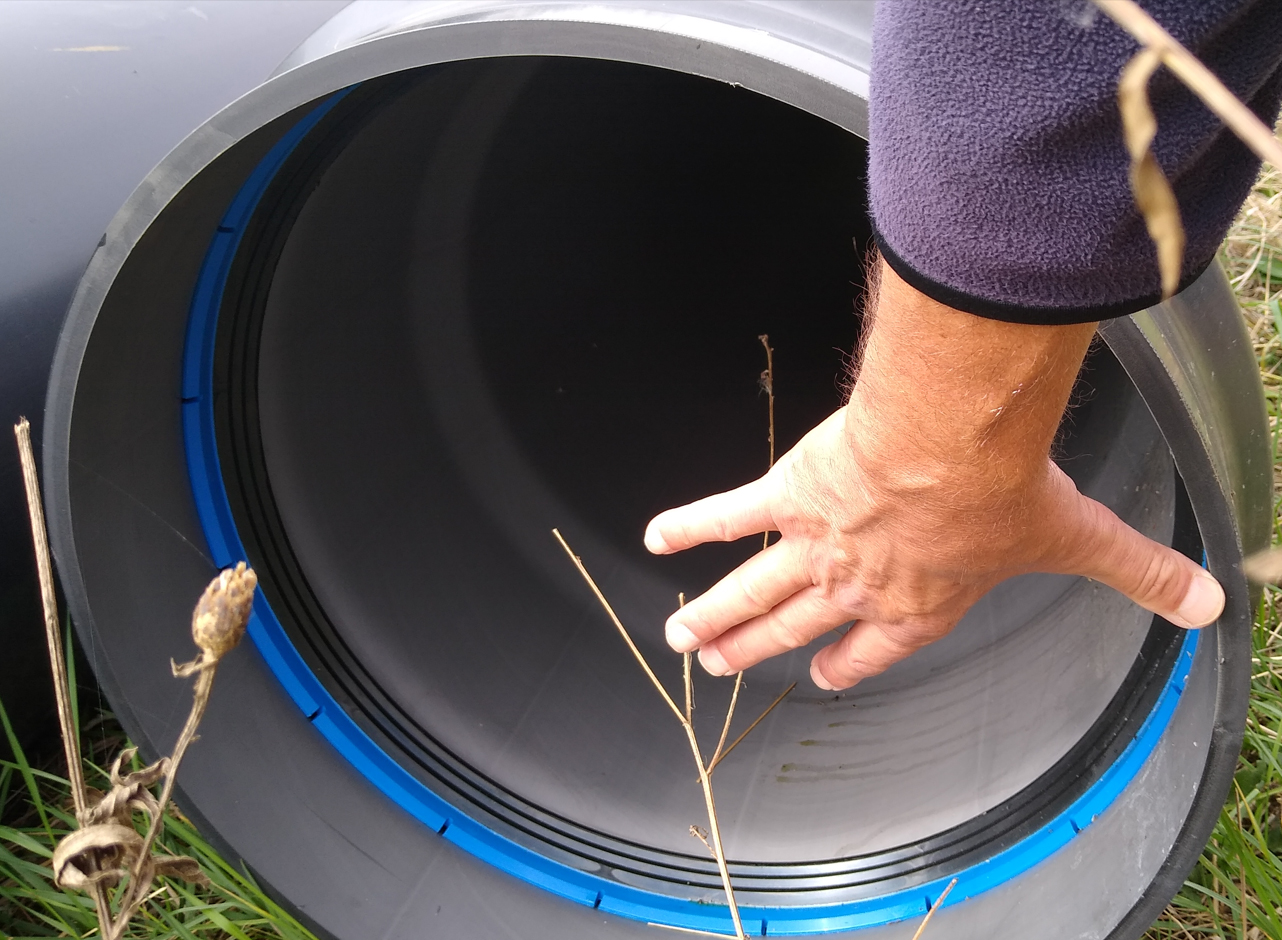
An excavator driver hit something hard over a metre below the surface and quickly alerted the landowner to something which was immediately of interest. Unsure what it was, the landowner alerted a friend with known historical interests in Evesham, who in turn contacted Wychavon District Council’s Archaeologist with news that what appeared to be a Roman road had been discovered.
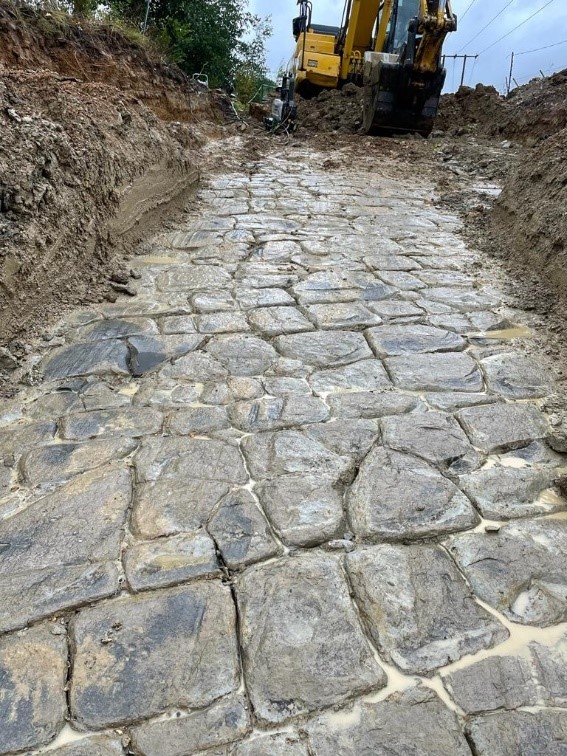
The Wychavon archaeologist visited site quickly, and based on the visual evidence and the proximity of extensive Roman finds to the north of Badsey Brook, was pretty sure that this was a Roman Ford. However, he cautiously stated that some tests were required to be sure that this was the case. He recorded an enthusiastic video which, at the time of writing, still appears on Youtube and the Wychavon website.
The archaeologist cautioned that “At the moment everything is ticking the boxes for it to be Roman, but it still feels too good to be true, so we are keeping an open mind”. However, he hyped it up by saying “nothing similar has been found in Britain to date. If it is a 1st century Roman structure, with its only known comparisons in Rome and Pompeii, then it is not only the only one of its kind in Britain to date making it nationally important, but you could also argue it is of international significance as we would gain more information on the feature through analysis of similar structures found in Italy.”
Soon after this, the landowner contacted the writer of this article, as he was intrigued by some old maps which had been added to the Offenham Facebook group, which gave the impression that Badsey Brook may have turned south at this point in the 17th century. This writer attended the site twice soon after, first to take photos for the use of local history groups, and the second time shortly afterwards to observe a visit by a senior archaeologist from Historic England who would have the ability to put the ford forward as a scheduled monument, which would have given it statutory protection.
Despite the initial excitement at this find, the outcome was not certain, and there were several red flag alarm bells which were initially missed.
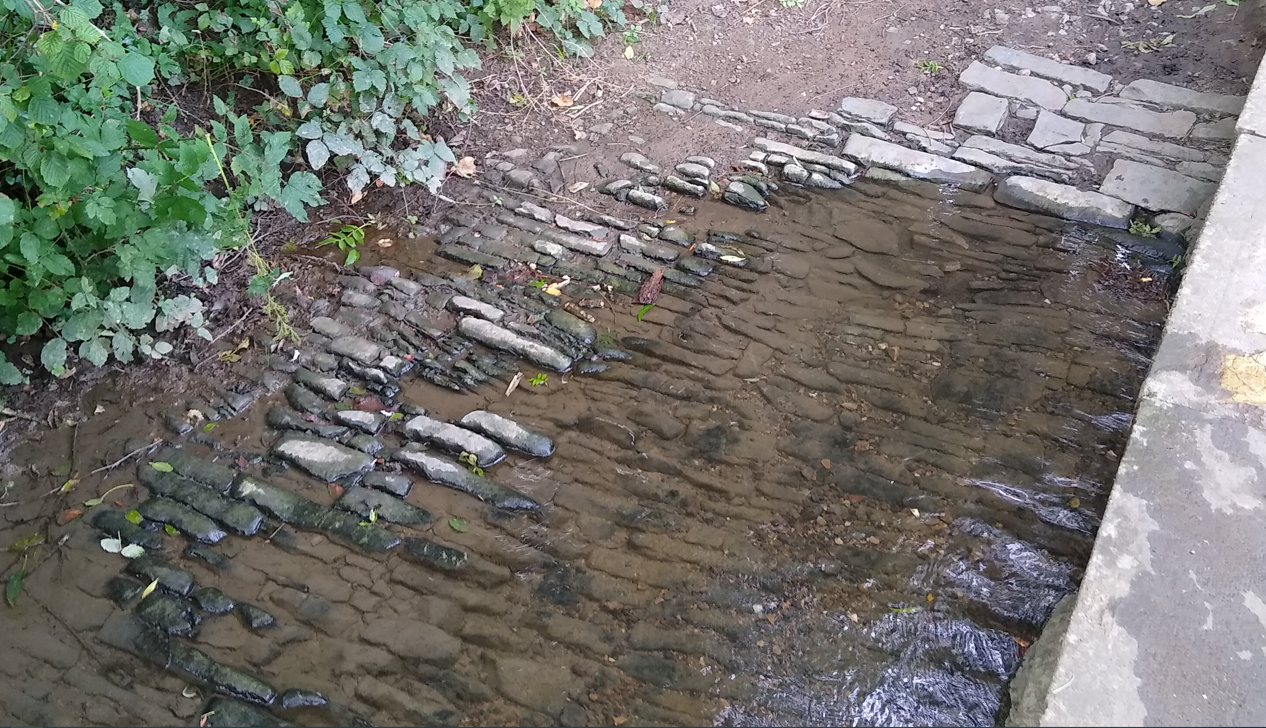
Firstly, it was literally too good to be true, and the photos demonstrate that it appeared to have been finished yesterday, with no sign at all of any vehicle tracks or other wear and tear. While Blue Lias (from which it was constructed) is a hard stone, it is also brittle - as many of the buildings nearby, and the well-known old ford in Aldington village demonstrate.
Secondly the location was wrong. The “ford” – of which only one slope had been found – was around 30 metres from Badsey Brook, and way too far from the River Avon. Significantly it also ran east-west whereas it would have needed to be north-south to cross Badsey Brook. The 17th century map was wrong due to a massive error of scale.
Thirdly, the angle of the slope was completely wrong for a ford. A ford has a shallow slope into the water, and a ford would rarely be under more than two feet of water, except in times of flood. This “ford” dived into the water at a much steeper angle and ended up nearly two metres below the water surface. The landowner was pumping the water out at a fast rate in order to allow the ford to be viewed.
Lastly, what appeared to be some very attractive quartz type vertical edging stones at the top of the ford actually veered off at a different angle towards the bottom of the slope.
Despite what many people believe, Roman roads in Britain were not paved with stone – in the style of this presumed ford – but were finished with a gravel surface from whatever stone was available locally.
The Natural England archaeologist met with Severn Trent archaeologists and several other interested parties at the site on 28th October 2022. Wychavon’s archaeologist was on holiday at the time. After much perusal of the site, and poking around with a trowel, Natural England’s expert came to the conclusion that this wasn’t Roman, and it wasn’t a ford at all – It was a completely natural limestone pavement.
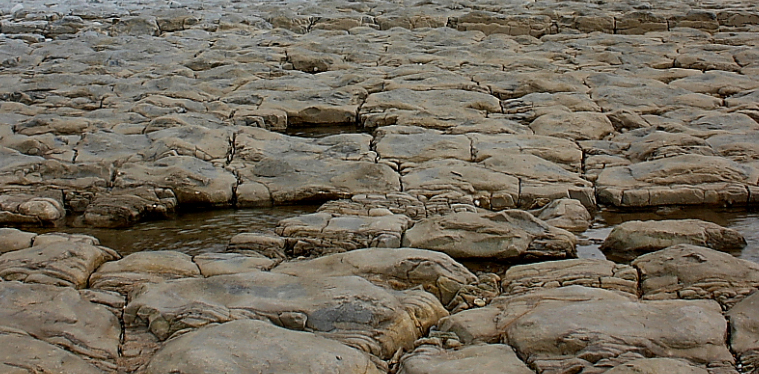
It is difficult to believe, but the “obviously man-made” structure turned out to be a rare natural limestone pavement, made from the local blue lias stone. It is difficult to persuade anyone that this is even possible until you show them a photograph of similar limestone pavements – such as several beaches in Wales.
Severn Trent’s contractor was keen to move forward with the pipeline excavation, and a decision was made at the same site meeting that the pipeline should be diverted a short distance to the south. While it wasn’t a Roman ford, it was of significant geological interest and the diversion was a good decision.
The hole was subsequently filled. The landowner did not want any publicity and was not keen for the exact position to be known. So that’s the reason for not being more exact with the location in this article.
The result was perhaps slightly embarrassing for some of the people involved. Since that is the case, no names have been mentioned in this article.
The genie is out of the bottle, and various history and archaeology Facebook sites regularly repeat the false story of this famous discovery and will continue to do so for many years ahead.
David Ella, August 2025
